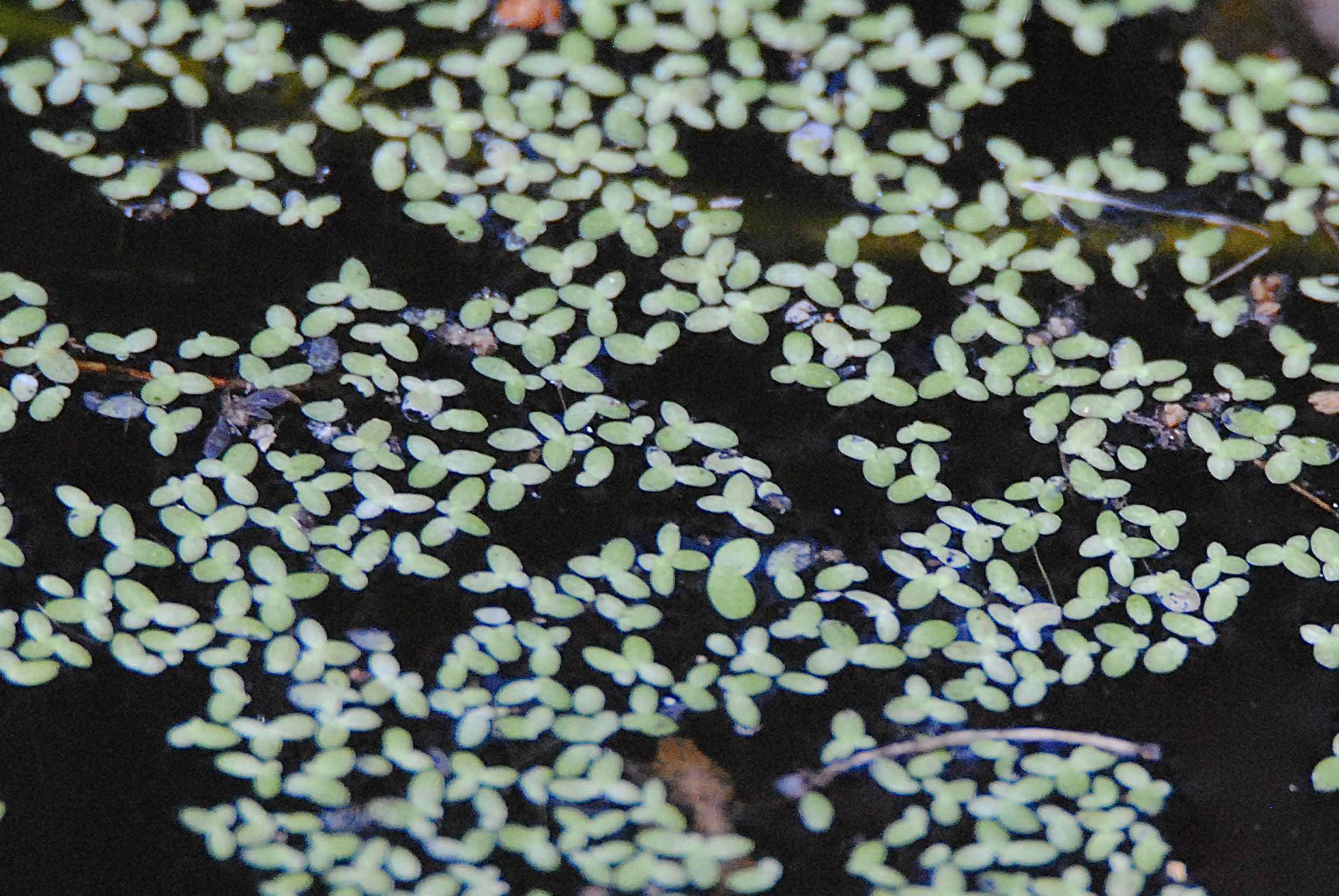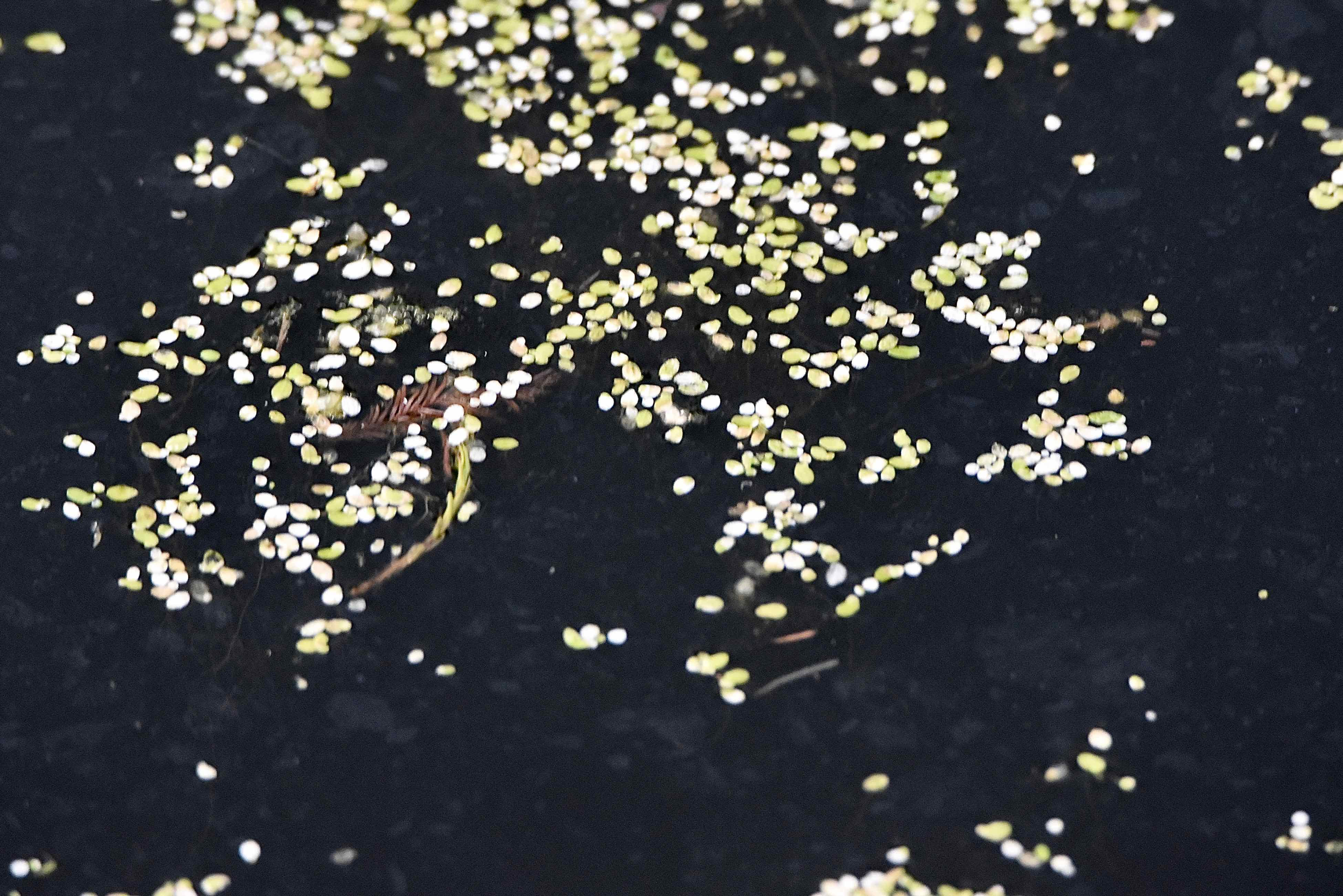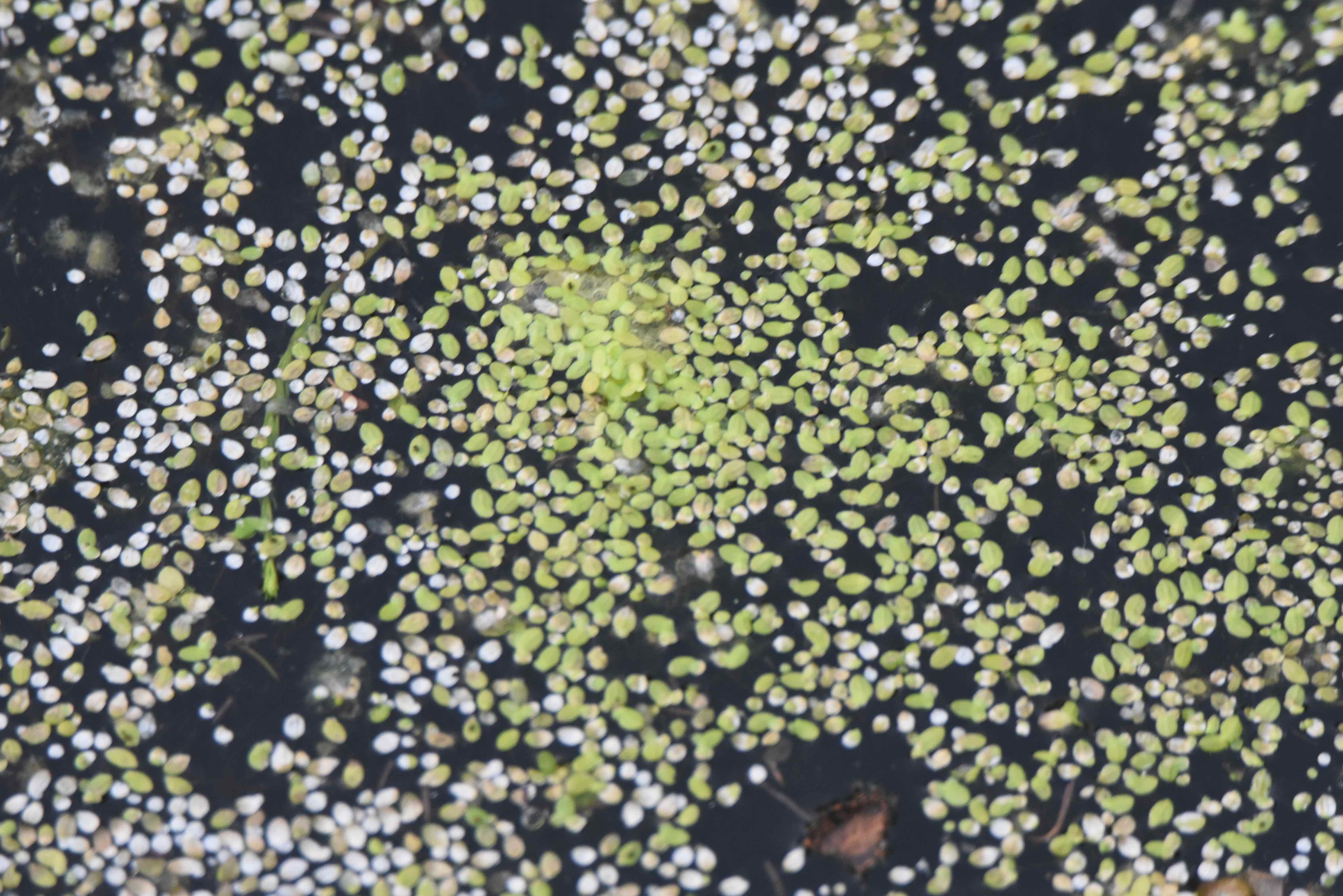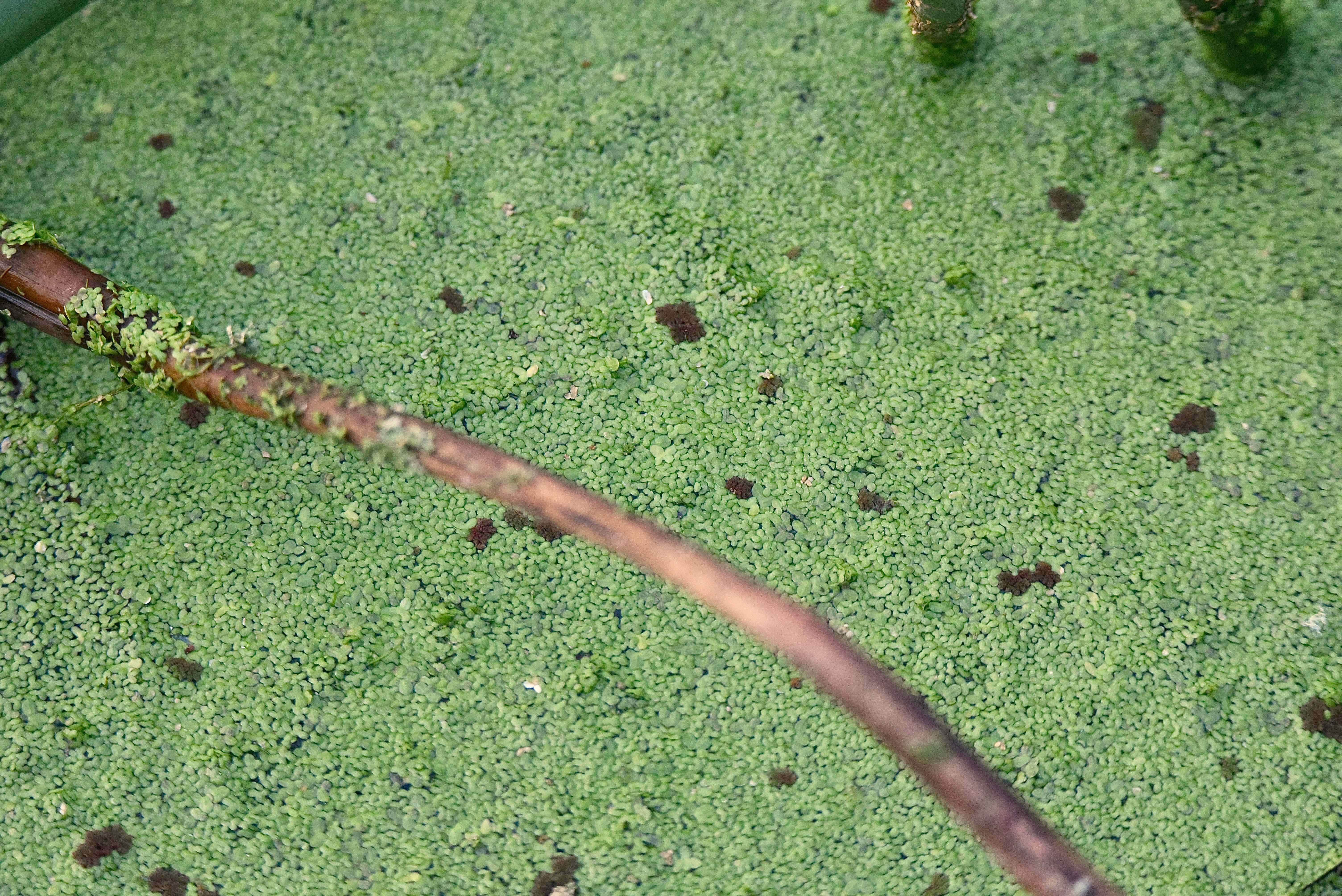
Duckweeds, photographed at Loxahatchee National Wildlife Refuge, Boynton Beach, Palm Beach County, in March 2016.
You’re looking at one of the smallest flowering plants on earth, possibly the smallest. Duckweed. We’re guessing the photo above is small duckweed, Lemna valdiviana, but individual species are difficult to identify, and there are four other duckweeds found in South Florida.
And they are tiny plants. Small duckweed maxes out at all of an eighth of inch across, their flowers minute, nearly microscopic. Duckweeds are, as a group, the smallest of all flowering plants, with the smallest of duckweeds holding the distinction of being the world’s smallest flower.
But despite their lack of heft, duckweeds are big in other ways, potentially incredibly useful plants as feed, fertilizer, medicine and more.
Worldwide, there are 37 duckweed species (we've also seen 38 as the number) divided into five genera. In North America, there are nine species; in South Florida there are five, representing three genera. Three species are members of Lemna, and one, called dotted duckweed, Landoltia punctata, is nonnative and considered invasive. It made its way here as an aquarium plant.
There’s also Spirodela polyrhiza, called giant duckweed, because it is the largest of the duckweeds, yet still tiny in the greater scheme of things. It’s also known as common duckweed and common duckmeat. That is not a typo. And we’ve seen at least three different species called “common” duckweed.
The other duckweed species found in South Florida, according to the Institute for Regional Conservation: lesser duckweed, Lemna aequinoctialis and little duckweed, Lemna obscura. By the way, the IRC uses Valdivia duckweed as the common name for Lemna valdiviana , what we’ve called small duckweed as per the folks at the University of Florida.
Duckweeds don't have leaves and they don't have stems. What look to be leaves are actually something like modified stems. And each these "modified stems" is a single plant, so what appears to be multiple "leaves" on a single duckweed plant are actually multiple plants joined together. In fact, they represent multiple generations — daughters and granddaughters and so forth — of the parent plant.
They are free-floating plants but they do have roots, which, while not anchoring them into soil, serve as stabilizers of sorts. The number roots can be useful in identifying some duckweed species. Look closely at the photo above and you’ll see a single root hanging from some of the plants, which is a trait of small duckweed.
Duckweed flowers do attract pollinators despite their lack of size, and plants are known to cross pollinate simply by colliding with each other as they float in the water, jarring pollen loose from one into the flowers of another. Duckweed fruit is a bladder-like thing called an ultricle that can have one or more seeds.
But duckweeds mainly reproduce vegetatively rather than sexually via flowers. They produce vegetative “buds,” that develop into new plants, and can form chains of individual plants all connected to each other. Some duckweeds form starchy buds called turions that break off the parent plant, sink to the bottom of the lake or pond inhabited. They consume the starch, then rise to the surface as a new plant. It’s the way some duckweeds survive winter.
Duckweeds reproduce like crazy, but have short lives, between 18 and 39 days, depending on the species. They also grow like crazy; some can double their mass in as little as 16 hours under optimal conditions. Duckweeds can form, large, dense mats (see the photo, bottom right). They're often mistaken for algae
In the natural world, duckweeds are important sources of food for waterfowl, ducks included, and fish. They also provide cover for smaller critters.
Duckweed plants have next to nothing in the way of fiber — as little as 5 percent of their mass in some species growing under ideal conditions — and a proverbial ton of protein — as much as 40 percent of their mass. That makes them easy to digest and useful as feed for livestock. They also absorb nutrients in the water, particularly phosphorus and nitrogen, and can be used to clean up farm runoff. The harvested plants, in turn, can be used as fertilizer as well as for feed.
Because they reproduce and grow rapidly and because they’re high in protein, scientists have studied using duckweeds to synthesize production of insulin and other biomedicines.
Duckweeds have been classified as members of their own family, Lemnaceae. The U.S. Department of Agriculture’s PLANTS database still lists them as such. But DNA evidence puts them in Araceae, the arum family. ITIS — the Inter-agency Taxonomic Information System, places duckweeds in Araceae.



